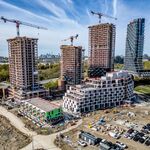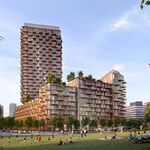andrewpmk:
Yes, but most people in Toronto does not work at the nodes along the proposed transit lines either, and downtown is the largest employment node in the GTA - and it is concentrated in a way that is servicable by transit in an efficient manner. Besides, if you look at the figures, most of the riders use these EW lines as transfer to Yonge. What figures do you have to a) back up the assertion that somehow the line will reach saturation within 20 years; b) that DRL would be ineffective at diverting riders and c) that when it reaches saturation, that ripping it up can't be done (when we have had a history of ripping up streetcar lines for subway)
So you are proposing that we ignore all ridership projections, and somehow decide to plonk umpteen billions (which is nowhere to be found) into subway and other very high order transit lines everywhere hoping it will solve congestion issues - and in the meantime, major suburban employment areas keep on moving outward (to say, Meadowvale) where servicing them will be even more difficult and uneconomical? Sorry, even ignoring capital expenditure - the increase in operating cost alone will bankrupt the transit agencies in the region. The only way to "fix" traffic congestion is to move the suburbs in a direction of increasing density such that higher order transit becomes feasible.
AoD




